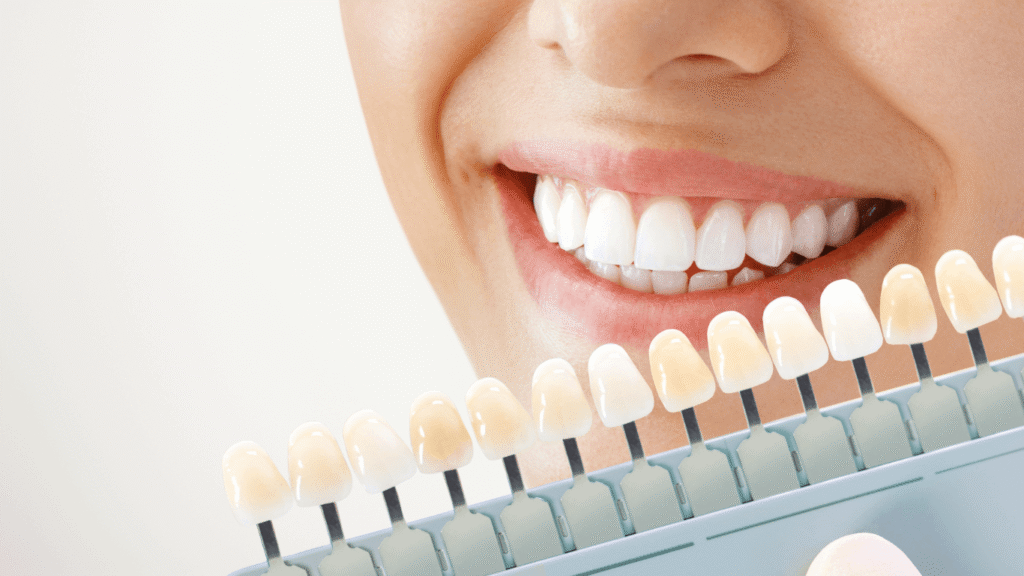
Teeth whitening is a cosmetic dental procedure used to lighten the color of your natural teeth by removing stains and discoloration. It can significantly improve the appearance of your smile.
Why Do Teeth Get Discolored?
Common causes of tooth discoloration include:
- Food and drinks (coffee, tea, red wine, cola)
- Smoking or tobacco use
- Poor oral hygiene
- Aging (enamel wears down over time)
- Medications (e.g., tetracycline)
- Trauma or damage to the tooth
🦷 Types of Teeth Whitening
1. In-Office Whitening
- Done by a dentist
- Uses a high-concentration peroxide gel (sometimes with laser/light activation)
- Takes 30–90 minutes
- Results are immediate and dramatic
2. At-Home Whitening (Professional Kits)
- Provided by a dentist
- Custom trays and professional-grade whitening gel
- Worn for a few hours daily or overnight for 1–2 weeks
3. Over-the-Counter (OTC) Products
- Whitening strips, pens, toothpaste, or kits
- Lower concentration of bleaching agents
- Results are less noticeable and take longer
✅ Benefits
- Brighter, more attractive smile
- Boosts confidence
- Non-invasive and quick
⚠️ Side Effects & Considerations
- Tooth sensitivity (temporary)
- Gum irritation if whitening agent touches soft tissues
- Uneven whitening (especially with crowns, veneers, or fillings)
- Not suitable for everyone (e.g., pregnant women, those with gum disease)
🧼 How to Maintain Whitened Teeth
- Avoid staining foods and drinks
- Use a straw for beverages like coffee or tea
- Don’t smoke
- Practice good oral hygiene
- Touch-up treatments every few months (if needed)

